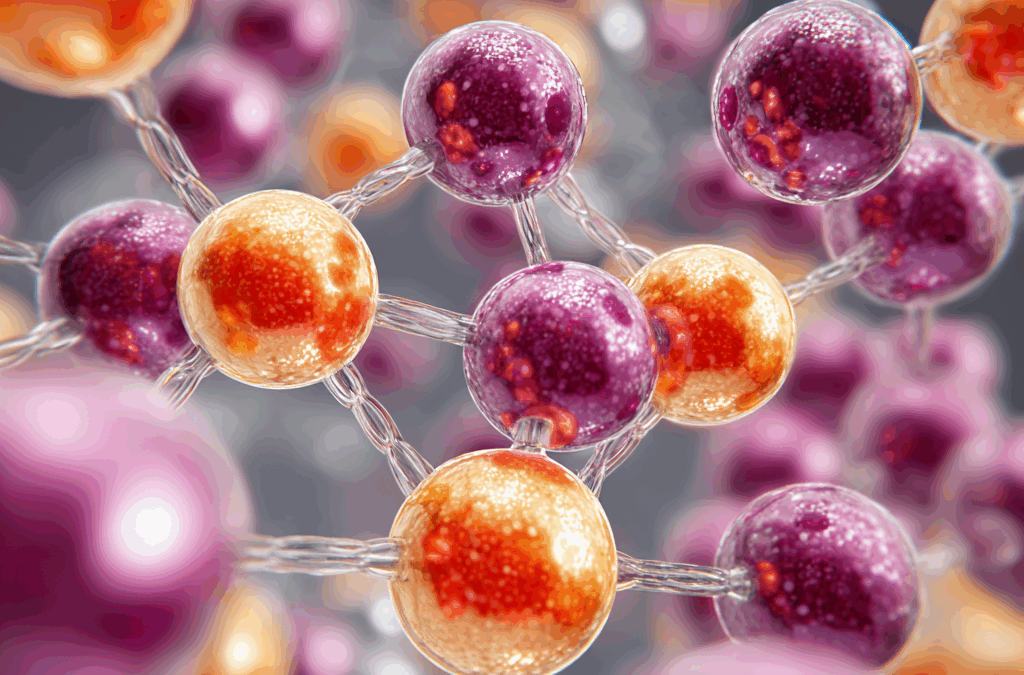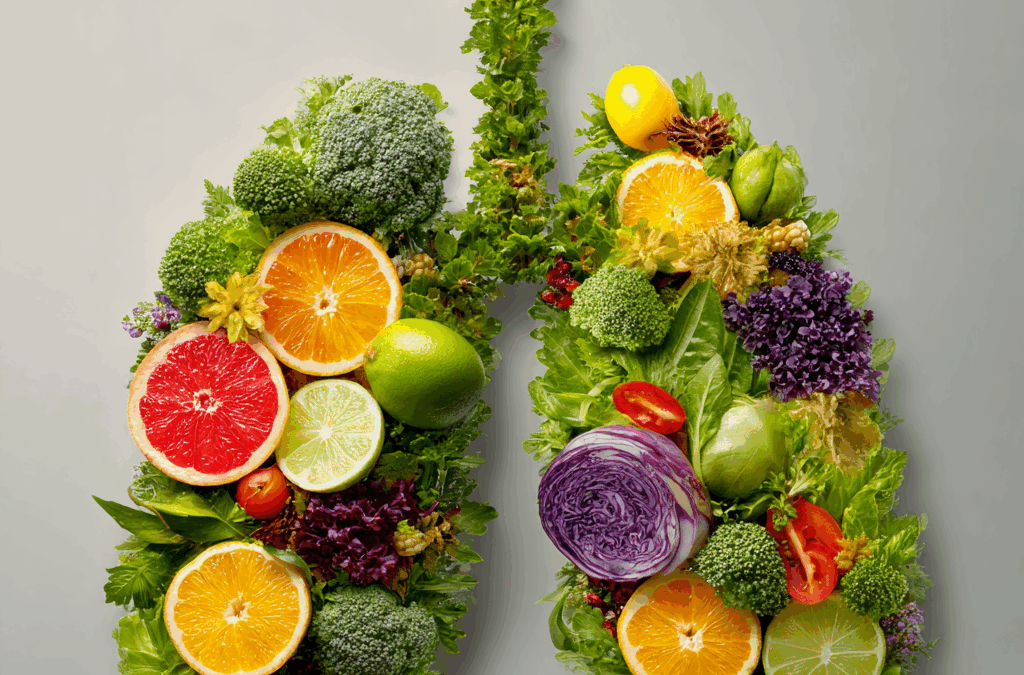
Oxygen on a Cellular Level – Ch 6 – Breathe to Heal: How Nutrition and Lifestyle Can Save Your Lungs
Chapter 6: Oxygen on a Cellular Level — The Role of Nutrients in Respiratory Energy and Immunity
Breathe to Heal: How Nutrition and Lifestyle Can Save Your Lungs
“You don’t just breathe oxygen — you become it.”
Each time you inhale, oxygen travels through a vast network of bronchi, bronchioles, and alveoli — finally reaching your blood, where it binds to hemoglobin and fuels every single cell.
But here’s the surprising truth: breathing oxygen isn’t the same as using it effectively.
Millions of people suffer from cellular hypoxia — a condition where cells don’t get enough usable oxygen — even though their blood oxygen readings look “normal.”
The missing piece? Nutrition.
Your body’s ability to absorb, transport, and utilize oxygen depends on specific vitamins, minerals, and coenzymes. Without them, oxygen can’t do its job.
This is where the science of nutritional respiration begins.
🧬 1. The Oxygen Cycle Inside You
Every cell in your body uses oxygen to create energy in the form of ATP (adenosine triphosphate) — the molecule that powers everything from thinking to healing.
This process, called cellular respiration, happens inside the mitochondria — your body’s “power plants.”
Oxygen acts as the final electron acceptor in the energy chain. When oxygen is abundant and nutrients are sufficient, energy production runs smoothly.
But when oxygen is scarce — or when key nutrients like iron, magnesium, and B vitamins are lacking — energy generation falters.
The result: fatigue, inflammation, shortness of breath, brain fog, and decreased immunity.
The lungs don’t just bring oxygen in — they rely on nutrition to turn that oxygen into life force.
⚙️ 2. Nutrients That Power Oxygen Utilization
Let’s explore the essential nutrients that make breathing efficient — not just at the level of the lungs, but within every cell.
🩸 Iron — The Oxygen Carrier
Why it matters:
Iron forms the core of hemoglobin, the protein that carries oxygen in red blood cells. Without enough iron, oxygen transport slows, leading to fatigue and breathlessness.
Symptoms of deficiency:
Cold hands, dizziness, brittle nails, and low stamina.
Best food sources:
Grass-fed beef, lentils, spinach, pumpkin seeds, blackstrap molasses.
Science says:
A Harvard School of Public Health review confirmed that correcting iron deficiency improved endurance and lung capacity by 25–40% in anemic adults.
🧠 Vitamin B Complex — The Energy Catalysts
Why it matters:
B vitamins (especially B1, B2, B3, B6, and B12) are cofactors in energy metabolism. They help mitochondria convert oxygen and nutrients into ATP.
Symptoms of deficiency:
Low energy, anxiety, shallow breathing, muscle weakness.
Best food sources:
Eggs, nutritional yeast, avocados, quinoa, fish, and leafy greens.
Science says:
People with low B-vitamin intake show impaired oxygen utilization and elevated lactic acid after exercise (Journal of Clinical Nutrition, 2023).
⚡ Magnesium — The Cellular Relaxer
Why it matters:
Magnesium participates in over 300 enzymatic reactions, including those that regulate ATP production and muscle relaxation — crucial for smooth breathing.
Symptoms of deficiency:
Tight chest, anxiety, irregular heartbeat, shortness of breath.
Best food sources:
Spinach, almonds, pumpkin seeds, dark chocolate, avocado.
Science says:
A 2024 European Respiratory Journal study found that magnesium supplementation reduced airway constriction and improved sleep-related oxygen saturation.
💚 Coenzyme Q10 — The Mitochondrial Spark
Why it matters:
CoQ10 acts like an ignition switch in mitochondria — shuttling electrons during oxygen metabolism to generate energy. It also shields lung tissue from oxidative stress.
Symptoms of deficiency:
Fatigue, muscle weakness, aging-related shortness of breath.
Best food sources:
Wild salmon, sardines, spinach, organ meats, and CoQ10 supplements (ubiquinol form).
Science says:
Patients with chronic lung disease who took CoQ10 showed a 33% increase in oxygen efficiency and less breathlessness during activity (Respiratory Medicine Reports, 2023).
🫁 Zinc — The Immune Guardian
Why it matters:
Zinc supports immune function and helps repair epithelial cells lining the lungs. It also regulates inflammation and antioxidant defenses.
Symptoms of deficiency:
Slow wound healing, frequent colds, low taste and smell sensitivity.
Best food sources:
Pumpkin seeds, oysters, chickpeas, cashews, grass-fed beef.
Science says:
A Johns Hopkins study found that zinc deficiency increased the severity and duration of respiratory infections by 45%.
☀️ Vitamin D — The Immune Modulator
Why it matters:
Vitamin D plays a major role in reducing lung inflammation and regulating immune overreaction. It’s especially protective against asthma, bronchitis, and viral infections.
Best sources:
Sunlight, fatty fish, eggs, fortified plant milk, and supplements during winter.
Science says:
Meta-analysis from The Lancet (2022) found that Vitamin D supplementation reduced acute respiratory infections by 30% in people with low baseline levels.
🍋 Antioxidants — The Oxygen Bodyguards
Why they matter:
Whenever your body metabolizes oxygen, it produces free radicals — unstable molecules that can damage tissue. Antioxidants neutralize these radicals before they cause harm.
Key nutrients:
Vitamin C, vitamin E, selenium, glutathione, and polyphenols.
Best food sources:
Berries, citrus, nuts, green tea, broccoli, garlic, and turmeric.
Science says:
Antioxidant-rich diets improve lung elasticity and slow aging of the respiratory system (Nature Medicine, 2023).
🔋 3. Oxygen, Mitochondria, and Aging
Mitochondria are your cells’ energy engines — and they thrive on oxygen.
But as we age, mitochondrial efficiency declines. The result? Less energy, slower healing, and reduced lung performance.
The good news: diet and breathwork can rejuvenate mitochondrial function.
Nutrients like CoQ10, alpha-lipoic acid, NAD precursors, and omega-3s support mitochondrial renewal, while deep breathing improves oxygen delivery.
In one NIH-backed trial, older adults who combined nutrient therapy with diaphragmatic breathing improved their oxygen uptake by 28% in just 8 weeks.
Aging lungs can’t always get younger — but their cells can act younger.
🌬️ 4. The Irony of Oxygen: When Too Much Becomes Harmful
Oxygen is life-giving, but it’s also reactive.
When not balanced by antioxidants, oxygen can create reactive oxygen species (ROS) — molecules that damage tissue and accelerate aging.
This is why balance is everything — you need enough oxygen to thrive, but also enough antioxidants to protect.
A diet rich in phytonutrients and omega-3s acts as a natural buffer, keeping your oxygen chemistry stable and safe.
💡 5. Breathing + Nutrition = Biological Optimization
The most powerful way to oxygenate your body isn’t just to breathe more — it’s to breathe better and feed better.
-
Deep, slow breathing increases oxygen delivery to tissues.
-
Nutrient-rich food ensures that oxygen is actually used efficiently by your cells.
Together, they create a synergistic loop of vitality:
Breathe → Nourish → Energize → Heal.
This is the foundation of your new respiratory metabolism — one that transforms every inhale into energy, strength, and renewal.
🌱 6. The “Oxygen Boost” Smoothie Formula
Try this as your daily lung-supporting tonic:
Ingredients:
-
1 cup spinach or kale
-
½ cup blueberries
-
½ avocado
-
1 tbsp flaxseed
-
½ tsp turmeric + pinch of black pepper
-
1 tsp raw honey
-
1 cup green tea or coconut water
Benefits:
-
Antioxidants (C, E, flavonoids) protect alveoli.
-
Omega-3s and magnesium reduce airway inflammation.
-
Green tea polyphenols enhance mitochondrial oxygen use.
Drink slowly while practicing 5 deep breaths — inhale for 4 seconds, exhale for 6 — turning nourishment into meditation.
🔑 Key Takeaway
Oxygen is only as powerful as the nutrients that help you use it.
Iron, magnesium, zinc, B vitamins, antioxidants, and CoQ10 form the invisible network that transforms every breath into cellular energy and resilience.
Feed your cells, and your breath will follow.



